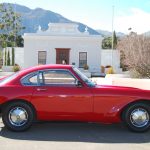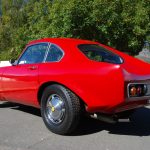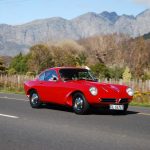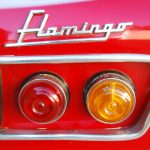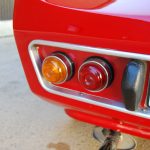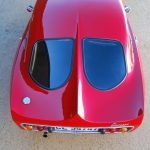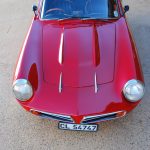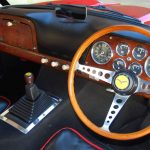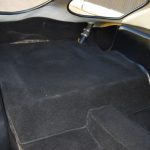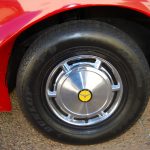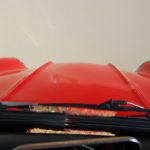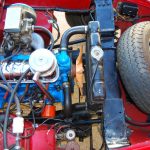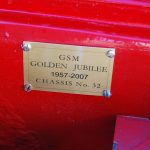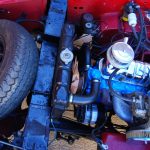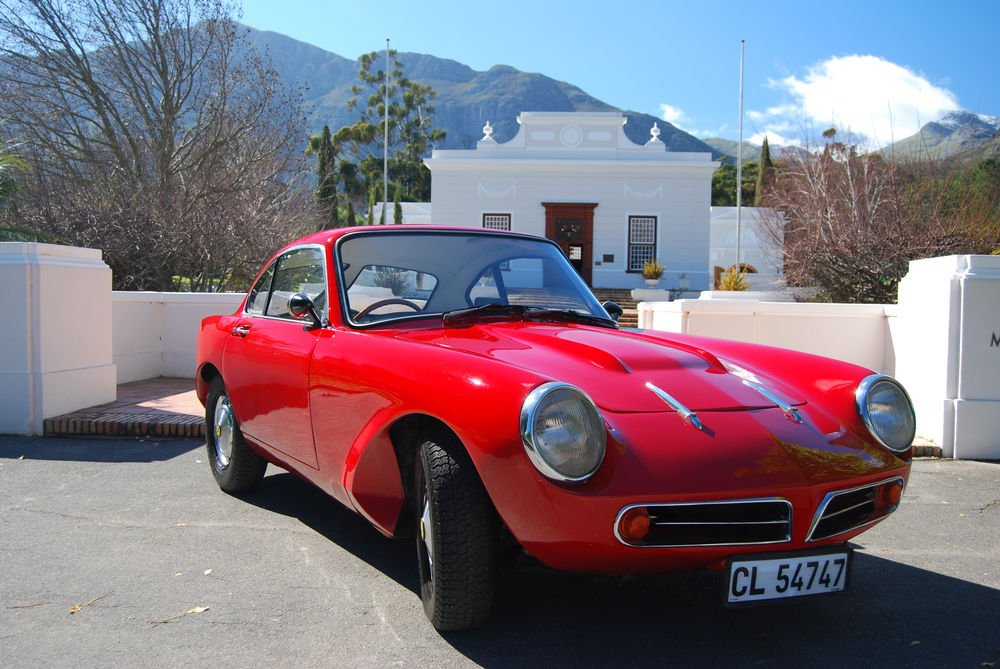
30 Jun Collection in action: GSM Flamingo
Darting around the study, seeing the book about the history of South Africa’s sports car manufacturer, GSM, being reviewed – see Between The Covers elsewhere in the newsletter – reminded Mike Monk about his drive in FMM’s bird with a glass fibre plumage…
Dabbling with old cars has its (usually) good and (occasionally) not-so-good sides – nothing is ever really bad! – because you have to accept that even though they are machines, age can take its toll just as much as with humans. A vehicle that has been renovated or even rebuilt to concours-winning condition – sometimes to the point of being better put together than when first built – makes a classic driving experience more enjoyable because of the lessened likelihood of a breakdown, whereas being behind the wheel of an original is frequently accompanied by the opposite thought.
Both extremes need a cautious approach: protect the pristine condition on the one hand, the cherished patina on the other. It was with the latter in mind that I set out in one of the most original coupé versions of South Africa’s most famous sports cars marques – a GSM Flamingo.
Chassis number 32, this gleaming red example still looks attractive, not least because of the distinctive dorsal fin that characterises the Flamingo coupé from its Dart roadster origins. Along with the heavily stylised wheelarches and dual-ribbed bonnet, the overall shape is actually full of character, surprising perhaps given GSM’s relatively modest resources of the time. Designed by Verster de Wit, the proportions are well balanced even to the size and shape of the glasshouse. It certainly does not look too dated in today’s traffic and drew lots of attention from pedestrians and other motorists once I was out on the road.
But nearly six decades of life has had an effect on FMM’s unmolested Flamingo. The glass fibre bonnet and doors no longer fit flush with the rest of the tubular steel-reinforced composite body – a common trait due to hinges loosening or sagging. It was the same inside: the glovebox lid is no longer a snug fit, the footwell carpeting is worn and the driver’s seat cushion and a couple of other items of trim are loose, but I felt privileged when sitting in a car that reeked with such honesty.
The cabin is surprisingly big, and although there is space in the floorpan, the low-set driver’s seat has limited rearward travel so getting the long legs of my 1,87-metre frame under the steering wheel and alongside the under-dash umbrella-type handbrake was a bit of a challenge. I only found out afterwards that the pedal box has 50 mm of adjustment… The pedals are offset to the right, but once settled in the fixed, semi-reclined position of the bucket seat I felt comfortable enough, with ample headroom.
Twist the key and the old 1,7-litre Ford in-line four bursts into life with a bark before ticking-over with a rumble. The car pulls away easily, the pedal action is nice and progressive and the unassisted steering not particularly heavy while manoeuvring, although the 13,7-metre turning circle has its frustrations. What is a surprise is the all-synchro gearshift, the short lever having a crisp, mechanical throw but with hardly any lateral movement between the 1-2 and 3-4 planes. Looking over the sharp ridges on the forward-hinged bonnet helps create a sporty feel while the view behind in the tiny rear-view mirror is somewhat distracting thanks to the split rear window. On this car, period aftermarket bullet door mirrors provide welcome extra vision. The six-pack cluster of instruments in the wood-veneered facia includes an ammeter and an oil pressure gauge.
The 1 758 cm3 engine was as used in Ford Germany’s Taunus 17M TS, meaning it was in the highest state of tune – a dizzy net power figure of 55 kW at 5 000 r/min and 140 N.m of torque at 2 500. But in a car with a licensing mass of just over 760 kg, the 72 W/kg power-to-weight ratio is not to be sniffed at and partially accounts for its sparkling performance. CAR magazine recorded a 0-96 km/h time of 11 seconds, the standing quarter mile in 18,25 seconds and a top speed of 154 km/h – 58 years ago, remember… Oh, and fuel consumption at a steady 60 mph (96 km/h) was around 9,8 litres/100 km.
But GSM cars were as much about handling as anything else and Mr GSM himself, the late Bob van Niekerk, stated at the car’s launch that the Flamingo had better roadholding than the Dart, which had already established a solid reputation on the race tracks around the country since its inception in 1957.The secret lay in GSM’s in-house-designed arrangement of double-trailing links at the right-rear and a single link at the left, the combined set-up effectively counteracting any torque effect. The use of rubber springs up front helped too. But I was intrigued to note that the spare wheel’s regular slot was right up front, ahead of the engine. With so little weight at the back, the car’s balance is therefore quite remarkable but I wondered what effect a full-to-empty fuel tank would have on such poise.
Forewarned of some wear in the front suspension links could cause some wheel shimmy, I erred on the side of caution on my drive but still experienced enough to appreciate what a fine car the Flamingo was for its day. By modern standards, hearing the fuel slosh around in the tank below the floor behind was a bit disconcerting, but failed to detract from the overall fun experience. The wood-rim steering wheel (customers could specify flat or dished) transmitted all that was going on up front, and through the chair’s thin, leather cushion and seat of my pants I was able to appreciate the car’s inherent stability. Despite the absence of bracing inside the cabin there was no detectable looseness about the structure, save for just a couple of creaks. The rear is quite cavernous but lacks any +2 seating – and there is no tailgate or boot lid, so luggage has to pass behind the seats.
Apart from the Taunus engine and transmission, Girling front discs and rear drum brakes (ex-Ford Consul 315) and a few other items, local content was said to account for 65 per cent of the Flamingo’s construction, a proud achievement for the times. Its coupé styling led to it being claimed as South Africa’s first GT, so there is a lot of significance attached to the car. FMM’s example is one of three known surviving Taunus-engined Flamingos out of the near 150 that were built, and while it may show signs of its age, it stands proud and is a tribute to some commendable South African automotive imagination and expertise.
(While certain lockdown restrictions still apply on movement and accessibility, this story is based on my article that first appeared in the Oct/Nov2012 issue of Classic & Performance Car Africa magazine – MM.)




